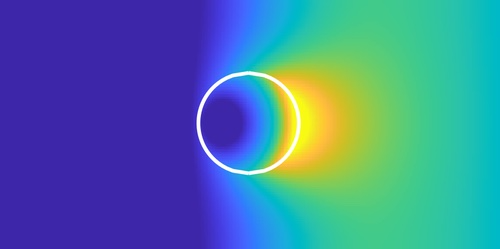Laser Creates Two Highly Polarized Electron Beams
In a polarized electron beam, the particles’ spins are not randomly oriented but favor a particular direction. The polarization serves as a useful property for studying the magnetism of materials or for probing the spins of atoms or nuclei. But such a beam typically has a low degree of polarization unless it is produced at a synchrotron facility. Theorists have proposed creating these beams using laser light, but so far these approaches have involved extremely intense lasers and have not been expected to produce high polarization. Now Deng Pan of East China Normal University and Hongxing Xu of Wuhan University, China, have proposed a method that reduces the required laser intensity by up to 10 billion times compared with previous laser-based approaches and that should produce a pair of beams that are nearly 100% polarized [1].
In Pan and Xu’s proposal, a wide laser beam broadsides an array of parallel conducting nanowires with 100-nm spacing and excites them to emit electromagnetic waves. An unpolarized electron beam is sent across the array, perpendicular to the wires, about 100 nm away from them. Some electrons absorb or emit photons, causing their spins to align parallel or antiparallel to the local electric field. They also gain or lose a photon’s worth of energy. This interaction with the radiation near the wires generates two new beams with nearly pure spin polarizations and slightly different energies, allowing them to be easily separated. Pan and Xu say that the technique should be implementable with current technology and that it may even lead to new ways of manipulating electrons.
–David Ehrenstein
David Ehrenstein is a Senior Editor for Physics Magazine.
References
- D. Pan and H. Xu, “Polarizing free electrons in optical near fields,” Phys. Rev. Lett. 130, 186901 (2023).




